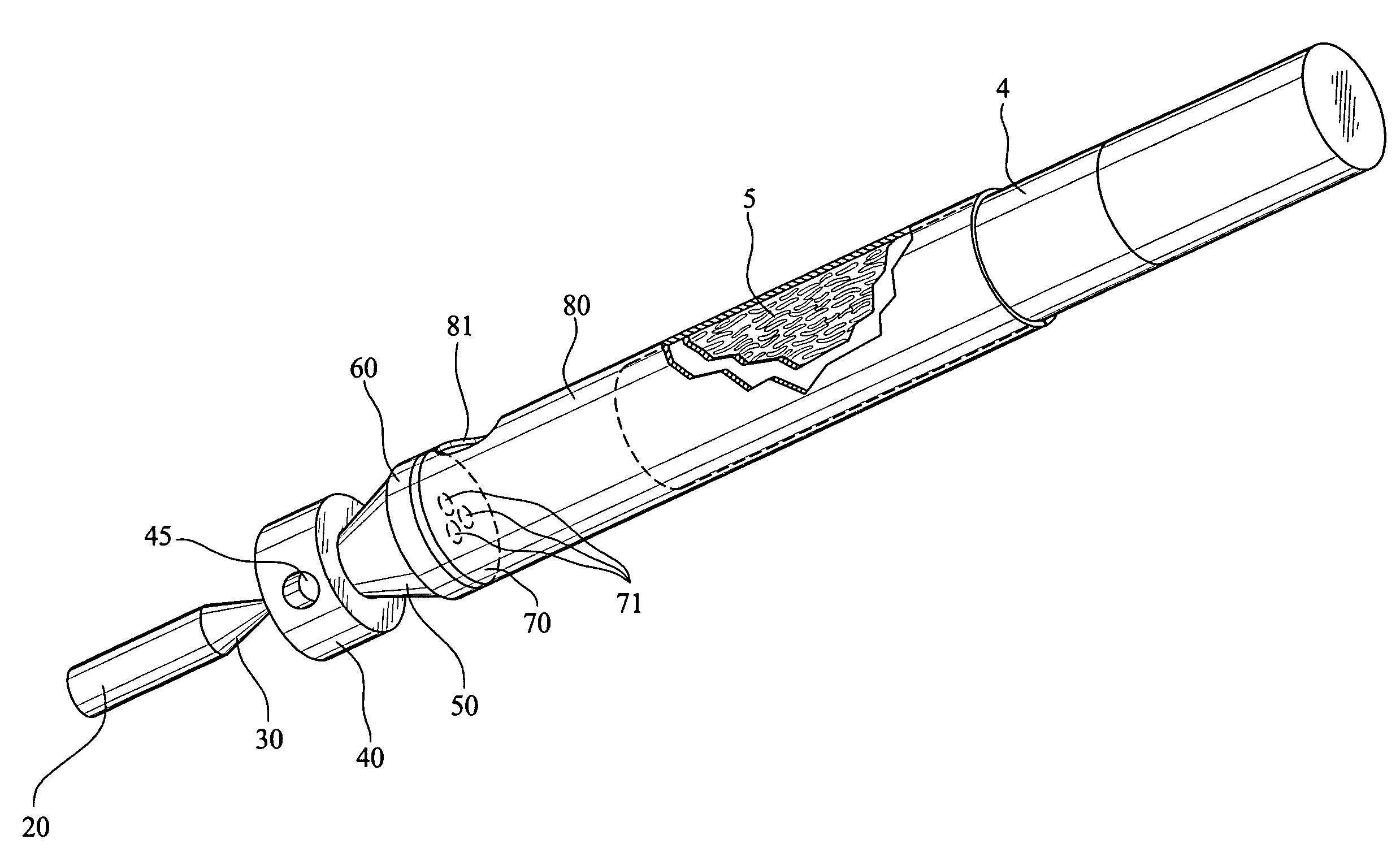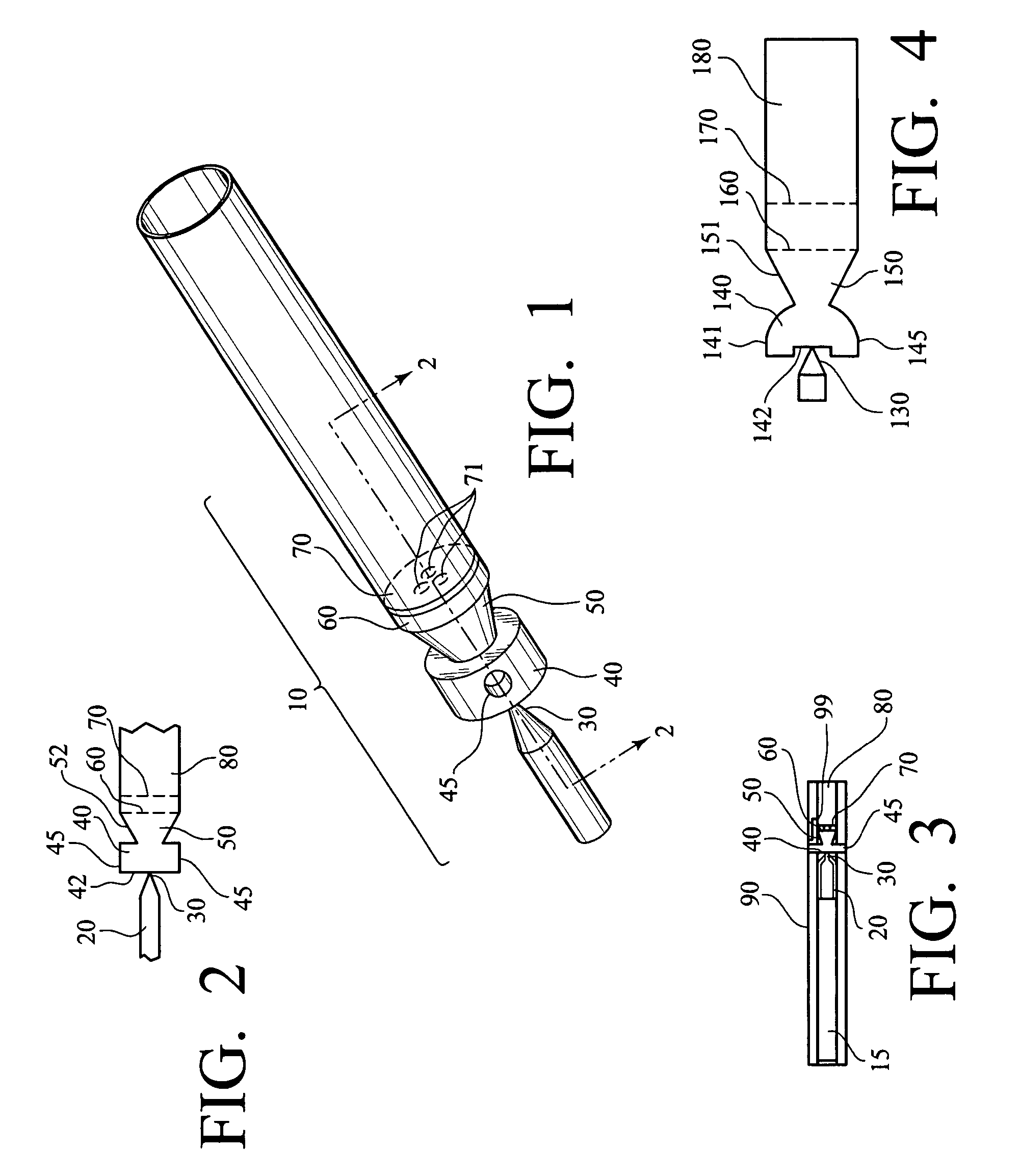Gas micro burner
a micro-burner and micro-gas technology, which is applied in the direction of burners, combustion types, burner material specifications, etc., can solve the problems of increasing the overall length of the burner apparatus, affecting the flow rate of fuel, and affecting the efficiency of the burner, so as to achieve the effect of low fuel mass flow rate requirements
- Summary
- Abstract
- Description
- Claims
- Application Information
AI Technical Summary
Benefits of technology
Problems solved by technology
Method used
Image
Examples
Embodiment Construction
[0050]As shown in the figures, a gas burner 10 includes a fuel inlet 20, a venturi, which includes a nozzle 30 and an oxygenation chamber 40 with at least one air inlet 45, a mixing chamber 50, at least one permeable barrier or mixing screen 60 and a flame holder 70. The gas burner 10 produces a stable pre-mixed flame that is generated with lower fuel mass flow rates than conventional burners. As a result, a lighter employing the gas burner 10 of the present invention may be sized smaller than conventional commercial gas lighters.
[0051]FIG. 1 shows the gas burner 10 of the present invention. The fuel inlet 20 connects a fuel storage container 15, as shown in FIG. 3, with the nozzle 30. The fuel inlet 20 provides a pathway through which gaseous fuel may be fed from the storage container 15, in which it is contained, to the gas burner 10. The fuel may be any gaseous fuel known in the art, including low molecular weight hydrocarbons such as methane, ethane, propane, butane, and acetyle...
PUM
 Login to View More
Login to View More Abstract
Description
Claims
Application Information
 Login to View More
Login to View More - R&D
- Intellectual Property
- Life Sciences
- Materials
- Tech Scout
- Unparalleled Data Quality
- Higher Quality Content
- 60% Fewer Hallucinations
Browse by: Latest US Patents, China's latest patents, Technical Efficacy Thesaurus, Application Domain, Technology Topic, Popular Technical Reports.
© 2025 PatSnap. All rights reserved.Legal|Privacy policy|Modern Slavery Act Transparency Statement|Sitemap|About US| Contact US: help@patsnap.com



